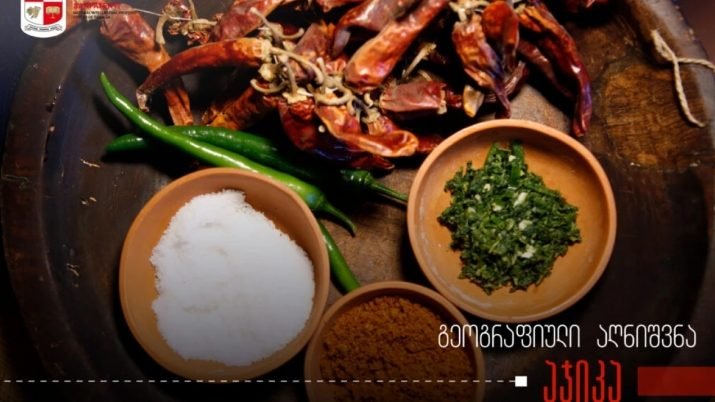Within the framework of the information campaign of geographical indications and names of place of origin, Sakpatent publishes an article about “Ajiki”.
As mentioned in the article, the geographical indication “Ajika” is registered in Sakpatent on September 29, 2022.
“Ajika is Apirpil-jika, i.e. pepper salt, a product of Abkhazian origin, which first spread to Samegrelo, then to Western Georgia, and finally to all of Georgia.
Pepper itself was brought from the American continent to the European continent in the 15th century. It is possible that the origin of the product made from pepper is related to the same period, but there are no sources confirming this fact. There is only a legend about Abkhazian shepherds who spent most of the year on pastures. In the alpine zone, they had little choice of food – only meat and milk. Therefore, variety was created with herbs and salt. Salt was expensive in ancient times. The owner of the cattle brought the salt separately to the shepherd, so that he could save it and give it to the cattle. As it is known, salt made the cattle hungry, then they took more water and food and gained weight quickly. The shepherds secretly stole salt for their food from the stocks belonging to the cattle. Of course, the owners were aware of all this and, to prevent the expected theft, they threw hot pepper on the “cattle road”. However, pepper and salt turned out to be more interesting for the shepherds. In this way, salt, herbs, and pepper naturally mixed together and formed into an interesting culinary compound.
Today, the technology of making Abkhazian apirpil-jiki and Megrian ajiki is recognized as an intangible monument. And from September 29, 2022, after Sakpatent entered the state register of geographical indications of ajik, the method of preparation of ajik was precisely determined by the registered specification, which means that in case of preparation of ajik for commercial purposes, the requirements of the specification must be strictly observed, in particular, only those grown on Georgian soil should be used. The products and their production should take place on the territory of Georgia.
The method of preparation is as follows: first, the necessary ingredients for ajik are collected – hot pepper, salt, garlic, dry spices and foreign spices. It is allowed to add walnuts, hazelnuts, sunflower seeds and greens to taste. Washing, drying, coarse and fine grinding of pepper, mixing it with garlic, salt, spices, all the details must be done carefully and precisely, in order to finally get the unique taste characteristic of Ajik. It is this careful processing that guarantees the intense release of essential oils in adjika and the unique aroma. Since adjika has a pasty consistency, spreading and distributing the flavors in the overall mass is especially important. An interesting detail is that the recipe of ajik was passed down from generation to generation orally or in writing, and thanks to its precise execution, the basic taste properties of ajik have not changed for centuries.
The only difference in form that we can find between today’s Adjika and Abkhaz Apirpir-Jika is the smoking. In Abkhazia, pepper was not cut until it was completely red. Then, it was hung to dry so that it could be taken out in a bowl, and after this ritual, it was started to be made in a special vessel called Ahakiya. Here, considering only this part, today’s adjika is prepared in a different style, but otherwise, all the basic details are preserved and all cooks repeat it carefully.
Ajika is the most important attribute of Georgian table. Along with other spices, it has a special place on any table and in restaurant menus. It is served both with meals and independently.
The detailed specification can be found on Sakpatent’s website”, the article mentions.
bp.ge










